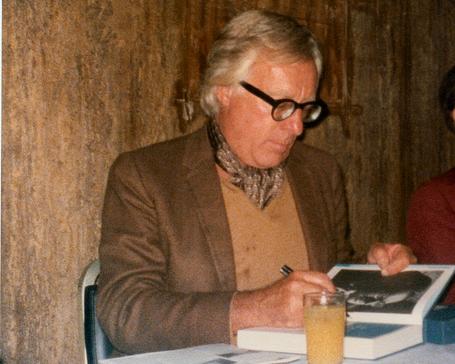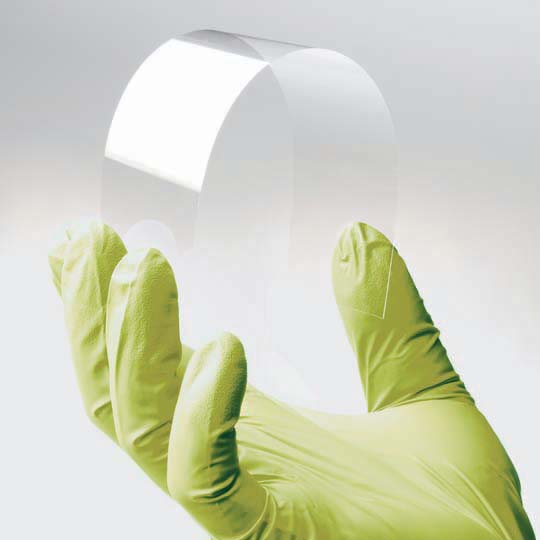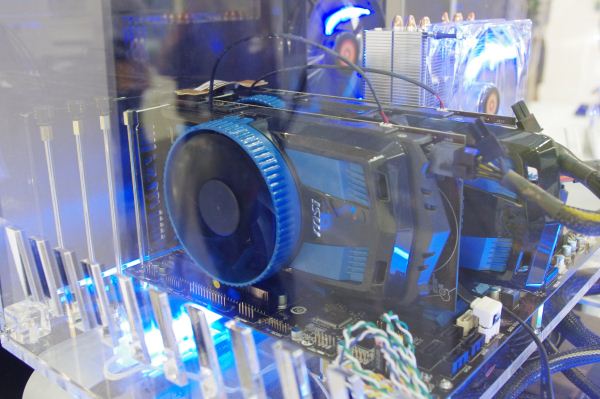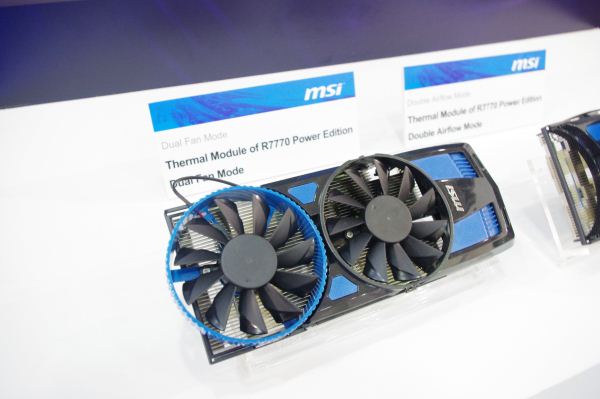Nasdaq said Wednesday that it plans to spend $40 million to compensate trading firms for losses caused by glitches that delayed Facebook’s debut.
From Gizmodo: LinkedIn Transmits Personal Data in Plain Text (Update: And Leaks Passwords, Too!)
The Next Web is reporting that LinkedIn’s iOS app collects personal data from its calendar—without explicit consent—and sends it back to the company’s servers in plain text. More »
from Gizmodo
From Engadget: ICE Computer’s modular xPC returns to Computex in working-prototype form, we go hands-on
From one year to the next, we see many of the same characters make an appearance at the same trade shows — this week, it’s Taipei’s Computex, and today, we’re back to visit ICE Computer. What last year was known as “Trinity” and hadn’t progressed beyond the mock-up stage has returned for 2012 as xPC — a working prototype of the company’s modular computer concept. Internet Communication Entertainment, abbreviated as ICE, envisions xPC being the only computer you’ll need. The device itself is barely larger than a smartphone, and would contain either an Intel, AMD or Tegra chipset, 2 gigs of RAM, 802.11 b/g/n WiFi, a 1.3- or 2-megapixel webcam and a 32 or 64GB SSD — all in a package that weighs in at approximately 50 grams. The sample we saw today was so light that we first mistook it for a plastic shell, yet it powered a typical desktop setup, complete with a monitor (HDTV), keyboard and mouse.
The current prototype doesn’t include a cooling infrastructure, so it was limited to a low-power 1.5GHz Intel Atom CPU for the time being. All of the company’s various enclosures will feature built-in fans, however, opening the concept up to a variety of configurations. The xPC doesn’t function on its own — instead, you dock it within a variety of accessories, such as the xDock, which would sit permanently on a desk or in a home theater cabinet and includes HDMI input and output, speakers, a pair of USB 2.0 ports, one USB 3.0 port, Ethernet, SATA and several other connectors. The xTop is the portable variant, offering many of the same connectivity options, but on a smaller scale. Finally, there’s the xPad, which brings 9.7- or 10.1-inch touchscreen control to the xPC in a tablet form-factor, yet still includes a bevy of connectivity, along with a webcam and battery.
There’s also an xPhone (think PadFone) concept, that packs all of the xPC’s functionality into a device that doubles as a smartphone — the California-based company didn’t have any mock-ups to speak of there, however. ICE expects to ship the xPC and xDock by the end of this year, with the computer module itself ranging in price from $100 to $250 depending on how you opt to configure it. The xPad could ship late this year or sometime in early 2013, with pricing to be announced. For now, the xPhone remains a concept, without any functional prototypes or even a mock-up to speak of. ICE representatives suggested that the company may partner with a smartphone manufacturer to develop that last component, so we have no idea if or when that may come to market. All in all, it’s a solid (and, thanks to PadFone, proven) concept — you can get a closer look in our hands-on after the break.
Gallery: ICE Computer modular xPC hands-on
from Engadget
From Ars Technica: Science fiction author Ray Bradbury dead at 91

Ray Bradbury, the American author of Fahrenheit 451 and Something Wicked This Way Comes, died today. He was 91 years old.
Bradbury was born in Waukegan, Illinois, in 1920, and he spent part of his teen years in Los Angeles, where he graduated high school. He got a start in publishing as a newspaper hawker, and in 1943 he became a full-time writer. Bradbury’s first published works consisted of short stories, a form he would master over the course of his career. The prolific writer also wrote novels, essays, plays, teleplays, and poetry.
Bradbury’s The Martian Chronicles was his first big break in science fiction publishing. The series of short stories told tales of Earth’s inhabitants colonizing the planet Mars, and Bradbury collected them into a single work. He also sold The Illustrated Man at the same time as The Martian Chronicles; both works brought him commercial success. In 1953, Bradbury published Fahrenheit 451. The book’s vision of a totalitarian state that burns books proved to be a provocative ideological work that evoked strong memories of Nazi Germany during World War II and pitted a strong ideology of freedom of ideas against totalitarian regimes.
from Ars Technica
From Ars Technica: New Willow Glass is rollable and paper-thin

Corning’s latest display glass technology, Willow Glass, launched Monday at a trade show in Boston. Willow Glass is glass spun extremely thin and flexible enough to roll into two-inch radius tubes, thanks to a manufacturing process similar to that used to make newsprint.
Corning, the company that makes the Gorilla Glass widely used in smartphone displays, uses roll-to-roll processes to make Willow Glass. The material is processed at temperatures of up to 500º C and rolled out over many cylinders (a rendering of the process is posted on YouTube). The result is a scratch-resistant, bendable sheet that measures 100 microns thick, about the same as a sheet of paper.
Willow Glass performs “exceptionally well” with touch sensors, so it will make a natural pairing with the curved smartphone designs that are all the rage, like the Samsung Galaxy Nexus and HTC One X. Corning further notes that the glass could be used in flexible solar cells and lighting. Spinning possible uses out further, we could see the glass used to make e-books into a physical manifestation of their pulpy predecessors—books with glass pages instead of paper ones. In photos, Willow Glass appears pliable enough that it can roll into a two-inch radius, and the PDF fact sheet shows that the 0.1mm thick Willow Glass can bend to a 5cm radius before reaching significant bend stress.
from Ars Technica
From AnandTech: Computex 2012: MSI GPU Technologies
Visiting the MSI booth today at Computex was rather exciting – they were showing off two rather interesting GPU fan technologies, alongside their portable Thunderbolt GPU device, GUS.
The first is a new GPU fan design, for users who want either increased GPU cooling, or increased VRM cooling. Â Initially being a small sized GPU, a user can add a second fan on top of the first, to increase the airflow blowing directly onto the main part of the cooler above the GPU:
This cooler can expand if a user has a long enough case, and the second fan can be moved to the edge of the cooler, providing more cooling along that side of the GPU.
This extra fan is limited to 40% RPM due to the controller being used. MSI tell us that there are plans to make this fan fully adjustable.
Also of interest to us is the introduction of the ‘dust-free’ methods MSI are bring to their main user line of enthusiast SKUs.  At startup, the fans on the GPU will spin in the reverse direction for 30 seconds in an attempt to draw dust out of the GPU (but dump it into the case).  After 30 seconds, the fans will spin back the other way to produce the desired cooling effect.  MSI say this has come about due to the Asian market, where pollution can cause dust buildup in cases and coolers.
GUS is what part of the world has been waiting for – an external GPU housing. Â Data transfer comes through a Thunderbolt cable to provide 10 Gbps bandwidth, and MSI state they should be selling this housing with a GPU up to 150W, so 7870, 7850 and 6850 models to begin with in Q3/Q4 if demand is high enough and Thunderbolt takes a hold in the market.
More photos in the gallery below.
from AnandTech
From Engadget: Microsoft debuts on{X} for Android, promises to ‘automate your life’
This definitely reminds me of ifttt.com service!
=====================================================
Well, we can’t exactly say we saw this one coming. Microsoft has today taken the wraps off a rather ambitious project dubbed on{X}, which is available exclusively for Android smartphones initially (support for more platforms is planned), and offers a range of tools that promise to help “automate your life.” Developed by the company’s R&D Center in Israel, the service consists of a website and an app, the former of which lets you select from a variety of scripts (or “recipes,” as Microsoft calls them), while the latter executes them on your phone. The kicker is that anyone can create their own recipes and share them with others, and they can take all of the capabilities of a smartphone into account — performing an action when you arrive at a specific location, for instance, or setting reminders based on the weather forecast (all the actual processing is handled on the phone). Much like Kinect, Microsoft is hoping that folks will take the platform and run with it, developing new features that it hasn’t even thought of. Those interested can get started right now at the source link below, or get a taste of the service in the video after the break.
from Engadget

















